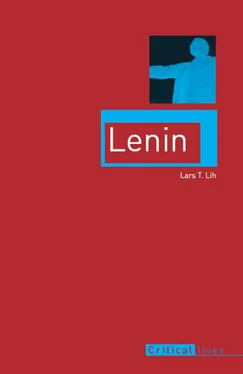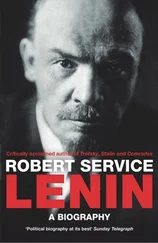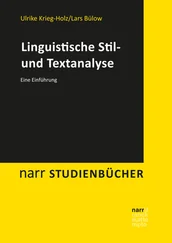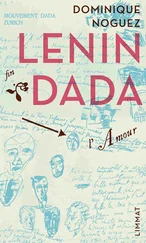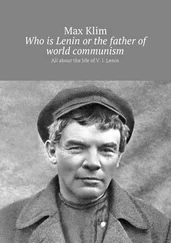Lars Lih - Lenin
Здесь есть возможность читать онлайн «Lars Lih - Lenin» весь текст электронной книги совершенно бесплатно (целиком полную версию без сокращений). В некоторых случаях можно слушать аудио, скачать через торрент в формате fb2 и присутствует краткое содержание. Город: London, Год выпуска: 2012, ISBN: 2012, Издательство: Reaktion Books, Жанр: Биографии и Мемуары, История, на английском языке. Описание произведения, (предисловие) а так же отзывы посетителей доступны на портале библиотеки ЛибКат.
- Название:Lenin
- Автор:
- Издательство:Reaktion Books
- Жанр:
- Год:2012
- Город:London
- ISBN:9781780230030
- Рейтинг книги:3 / 5. Голосов: 1
-
Избранное:Добавить в избранное
- Отзывы:
-
Ваша оценка:
- 60
- 1
- 2
- 3
- 4
- 5
Lenin: краткое содержание, описание и аннотация
Предлагаем к чтению аннотацию, описание, краткое содержание или предисловие (зависит от того, что написал сам автор книги «Lenin»). Если вы не нашли необходимую информацию о книге — напишите в комментариях, мы постараемся отыскать её.
Lenin — читать онлайн бесплатно полную книгу (весь текст) целиком
Ниже представлен текст книги, разбитый по страницам. Система сохранения места последней прочитанной страницы, позволяет с удобством читать онлайн бесплатно книгу «Lenin», без необходимости каждый раз заново искать на чём Вы остановились. Поставьте закладку, и сможете в любой момент перейти на страницу, на которой закончили чтение.
Интервал:
Закладка:
This newspaper would then make an appeal to the local committees in Russia to become integral partners in its creation (through providing factual material and reports) and distribution. Thus, for the first time, the committees would be working together on a national project. The organization needed to transport the news papers would be the embryo of a national organization of professional revolutionaries that linked centre and localities. Furthermore, this newspaper would create programmatic unity by preaching a consistent line to which the various committees could adhere. The politically oriented agitation of the newspaper would also strengthen nationwide unity, since political issues tended more than economic grievances to be common, national ones. If all went well, the virtual authority claimed by the newspaper would create enough practical and programmatic unity among the scattered local committees that their representatives could come together and act effectively to create an actual authority. The newspaper, hitherto a private affair, could then become the sanctioned, legitimate voice of a genuinely functioning set of central institutions.
Such was Lenin’s ambitious plan. In the meantime Iskra was already helping to make Social Democracy a political factor on the national scale simply by propagating a unified, all-Russian message. Iskra portrayed the situation in Russia as seen through the prism of Lenin’s heroic scenario. The autocracy was on the verge of collapse. All sections of society were thoroughly disgusted with the clumsy monster. The workers, the peasants, the entrepreneurs, the nationalities, even many landowners – all had turned against the tsar. Discontent was turning into protest and protest into action, and the main impulse for the growing intensity of the revolutionary crisis was the mass actions of the workers. Their heroic protest, not just against capitalists but directly against tsarist despotism, was galvanizing the rest of society into a reali zation that the autocracy could be overthrown. And once this realization took hold, the autocracy’s days were numbered.
The same heroic picture of Russia in crisis permeates the pages of What Is to Be Done? (1902), later described by Lenin as a compendium of the Iskra outlook. The book is filled with nuts-and-bolts organizational strategies but what gives life to these prosaic arguments is the poetry of the exalted mission imposed by history on the Russian konspiratsiia underground. What Is to Be Done? portrays the Russian workers as so eager to fight that they continually outstrip the capacity of the Social Democrats to provide the requisite knowledge and organization. The workers continually push forth leaders from their own ranks – leaders who are able to inspire their fellows to undertake the noble task of freeing Russia from shameful despotism. As a result the workers as a class are on the move and they are galvanizing all of Russian society.
Lenin’s own inspiration in What Is to Be Done? is the mighty German Social Democratic party, whose example is invoked much more often and more concretely than is the example of the earlier Russian conspiratorial underground. Lenin assured his readers that the empirically worked-out application of the SPD model to Russian conditions – the threads strategy – was perfectly workable, if the praktiki would only hone their own professional skills. All that was necessary was to combine tight konspiratsiia at one level with a looser and more open type of organization at levels closer to the workers. Both ends of the threads thrown out by the underground would be protected. Secrecy would insulate the local party institutions from the police, while the supportive worker milieu would insulate activists directly in contact with workers.
One of the most famous quotes from What Is to Be Done? is the cry: ‘give us an organization of revolutionaries – and we will turn Russia around!’ This is often taken as a clarion call for a conspiratorial underground: ‘Forget about the unreliable workers and concentrate on conspirators recruited from the intelligentsia.’ But when Lenin’s statement is read in its immediate context it reveals itself as one more manifestation of Lenin’s unrepentant confidence in his heroic scenario. Lenin’s actual argument is: even back in 1895 the workers were so militant that the weak link in the chain was we ourselves, the Social Democrats. We failed in our job of providing the organization needed to make worker protest effective. How much more true today, when everybody can see the workers are on the move against tsarist absolutism! No wonder Lenin informed the sceptics: ‘You brag about your practicality and you don’t see (a fact known to any Russian praktik ) what miracles for the revolutionary cause can be brought about not only by a [local Social Democratic] circle but by a lone individual.’ 35
What Is to Be Done? focuses on the underground’s role in the epic national struggle against the tsar that Lenin saw in his mind’s eye. But What Is to Be Done? is only one part of Lenin’s output during his years with Iskra (1900–1903). He also wrote scores of articles for Iskra and other publications, plus a seventy-page pamphlet entitled To the Village Poor (An explanation for the peasants of what the Social Democrats want) . Because this overlooked pamphlet is one of the few pieces Lenin wrote exclusively for a non-party audience, it can be recommended as a very accessible presentation of Lenin’s heroic scenario. If To the Village Poor were as well-known as What Is to Be Done? the heart of Lenin’s vision would be much better understood than it is.
The writings of the Iskra period covered a wide range of topics, but all of them were informed by the fiery energy of Lenin’s commitment to his ‘other way’. Among the subjects treated are:
The overall crisis facing tsarism and its ineffective attempts to stave off its swiftly approaching doom.
Heroic worker protest and its effect on the rest of Russian society.
The peasantry as an integral part of the anti-tsarist coalition.
The nationalism of ethnic minorities, to be encouraged as a force subverting tsarism but discouraged as a centrifugal force within the party.
Individual terrorism as an outmoded and harmful revolutionary expedient.
The deficiencies of the liberals and the Socialist Revolutionaries (SRs), the emerging rivals to Social Democracy for leadership of the anti-tsarist revolution.
As we saw earlier, Iskra was also meant to be a springboard toward achieving ideological and organizational unity among the scattered committees. This part of Lenin’s plan was also put into practice, but the reality was a lot messier than his original picture. True, more and more committees officially endorsed Iskra as their spokesman. But this bandwagon effect was achieved at the cost of hurtful internal struggles, sharp practices on all sides and local reorganizations that, although intended to help put workers onto local committees, were carried out in such a way that many workers felt seriously aggrieved.
In April 1903, Lenin and Krupskaya moved rather reluctantly from London to Geneva, in deference to the wish of the other Iskra editors to be together in one city. By this time enough momentum had been created to organize an acceptably representative Second Congress, and RSDWP members met abroad in August 1903. The Congress opened in Brussels but was then forced by pressure from the Belgian police to move to London. As Social Democrats often said to console themselves during the bitterness of the ensuing factional struggle, the Second Congress did have some lasting positive achievements. Not only were central party institutions finally created, but a consensus on basic programmatic and tactical perspectives was laid down. Social Democracy had become and remained a coherent all-Russian presence.
Читать дальшеИнтервал:
Закладка:
Похожие книги на «Lenin»
Представляем Вашему вниманию похожие книги на «Lenin» списком для выбора. Мы отобрали схожую по названию и смыслу литературу в надежде предоставить читателям больше вариантов отыскать новые, интересные, ещё непрочитанные произведения.
Обсуждение, отзывы о книге «Lenin» и просто собственные мнения читателей. Оставьте ваши комментарии, напишите, что Вы думаете о произведении, его смысле или главных героях. Укажите что конкретно понравилось, а что нет, и почему Вы так считаете.
